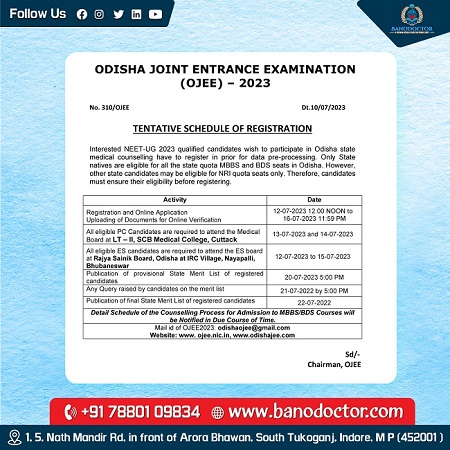
The International English Language Testing System (IELTS) | Bano Doctor is Here to Help You
The International English Language Testing System (IELTS)
The International English Language Testing System (IELTS) is a globally recognised standardized test that assesses non-native English speakers' English language proficiency. It is widely used for academic and professional purposes, such as university admission, visa applications, and job opportunities in English-speaking countries.
IELTS Exam History
The British Council, IDP Education, and the University of Cambridge ESOL Examinations first offered the IELTS exam in 1980. Its goal was to create an internationally recognised English proficiency test that could be used for academic and professional purposes. With over 3 million tests taken each year, the IELTS exam has become one of the most widely used English language tests in the world.
IELTS Exam Types
IELTS exams are divided into two types: Academic IELTS and General Training IELTS. The Academic IELTS is for students who want to study at an English-speaking university or institution, whereas the General Training IELTS is for those who want to work, train, or migrate to an English-speaking country. Both tests have the same format and are given in the same manner.
You can register for the IELTS exam online by visiting the British Council or IDP Education websites. You will need to choose a test date, location, and type (Academic or General Training).
Payment: After registering, you must pay the exam fee online or via bank transfer.
Confirmation: Once you have paid, you will receive an email from the British Council or IDP Education confirming your exam date, time, and location.
On the day of the exam, you must bring your passport or another form of valid identification to the testing center. You should also bring pens, pencils, and erasers.
The IELTS exam is divided into four sections: listening, reading, writing, and speaking. The Listening, Reading, and Writing sections are all administered on the same day, whereas the Speaking section may be administered on a different day.
You will receive your IELTS exam results 13 days after taking the exam. Your results will be made available online and sent to the institutions you designated during registration.
IELTS results are valid for two years from the date of the exam.
IELTS Exam Structure
The IELTS is a paper-based exam with four sections: listening, reading, writing, and speaking. The entire test lasts 2 hours and 45 minutes.
Listening
The Listening section lasts 30 minutes and is divided into four sections of ten questions each. The recordings, which are based on social and academic situations, are only played once. Conversations, monologues, and lectures may be included in the recordings.
Reading
The Reading section lasts 60 minutes and is divided into three sections with a total of 40 questions. The quotations are from academic or general-interest sources such as books, newspapers, or magazines. Multiple-choice, matching, and true/false/not given questions may be used.
Writing
The Writing section lasts 60 minutes and includes two tasks. Test takers must describe and summarize information presented in a graph, chart, or diagram in Task 1. Test takers are required to write an essay on a given topic for Task 2.
Speaking
The Speaking section lasts 11-14 minutes and consists of a face-to-face interview with an examiner. There are three sections in this section. Part 1 is an introduction and discussion of common topics. Part 2 requires test takers to speak for 2 minutes on a specific topic. Part 3 is a discussion of the topic from Part 2.
How to Get Ready for Examination of ILETS
Preparing for the IELTS exam can be challenging, but with careful planning and dedication, you can achieve your desired score. Here are some pointers to help you get ready:
Make yourself familiar with the test format: The IELTS exam is divided into four parts: listening, reading, writing, and speaking. Learn the format of each section as well as the types of questions that will be asked.
Work on improving your English language skills, including grammar, vocabulary, and pronunciation. You can get help from books, online resources, and language-learning apps.
Regular practice is essential for success in the IELTS exam. Take practice tests on a regular basis to become acquainted with the test format and to assess your progress.
Work on time management: Because the IELTS exam is timed, it is critical to practice time management. Practice finishing each section of the exam in the time allotted.
Seek professional assistance: Consider taking an IELTS preparation course or hiring a tutor to assist you with your exam preparation. They can offer you valuable advice and feedback.
Stay calm and focused: Stay calm and focused on the day of the exam. Avoid cramming and get plenty of rest the night before the exam.
Remember that consistent and focused preparation is the key to IELTS exam success.
Exam Scoring for IELTS
The IELTS exam is graded from 1 to 9, with 9 being the highest possible score. Each section is scored separately, and an overall band score based on the average of the four sections is calculated. The IELTS exam does not have a pass or fail grade. The scores are used to determine academic and professional English language proficiency.
Preparing for the IELTS Exam
Attending IELTS preparation courses, practicing with sample test materials, and regularly practicing English language skills can all help you prepare for the IELTS exam. It is critical to become acquainted with the test format and scoring system, as well as to develop time management strategies in order to complete the test in the allotted time.
Conclusion
To summarize, the IELTS exam is a globally recognized standardized test of English language proficiency for non-native speakers of English. It is widely used for academic and professional purposes, such as university admission, visa applications, and job opportunities in English-speaking countries. The exam is divided into four sections: Reading, listening, writing, and speaking.









































![Online Application Form for the National Eligibility-cum-Entrance Test [(NEET (UG)] 2024](https://www.banodoctor.com/public/notifications/1707717098.webp)







